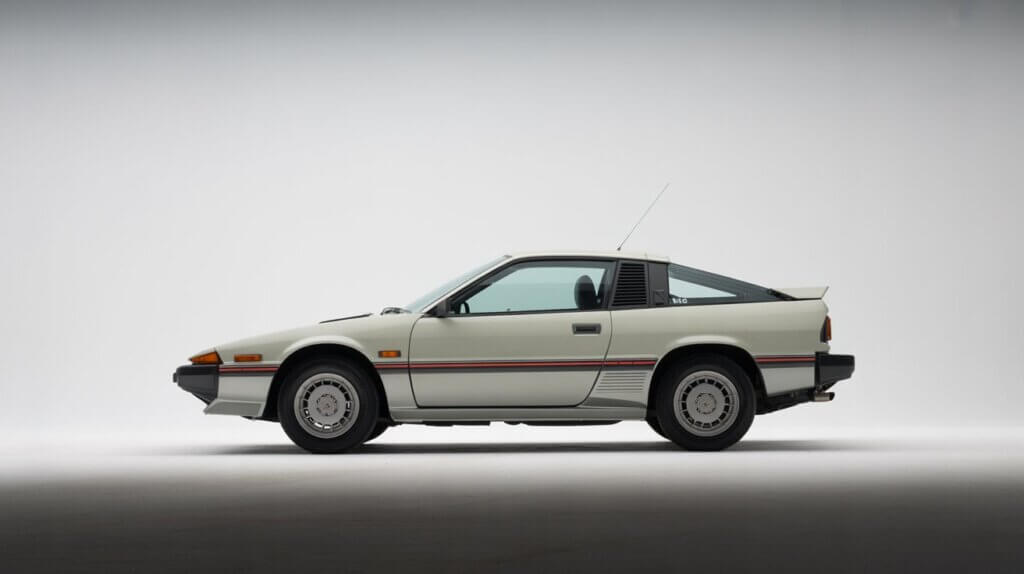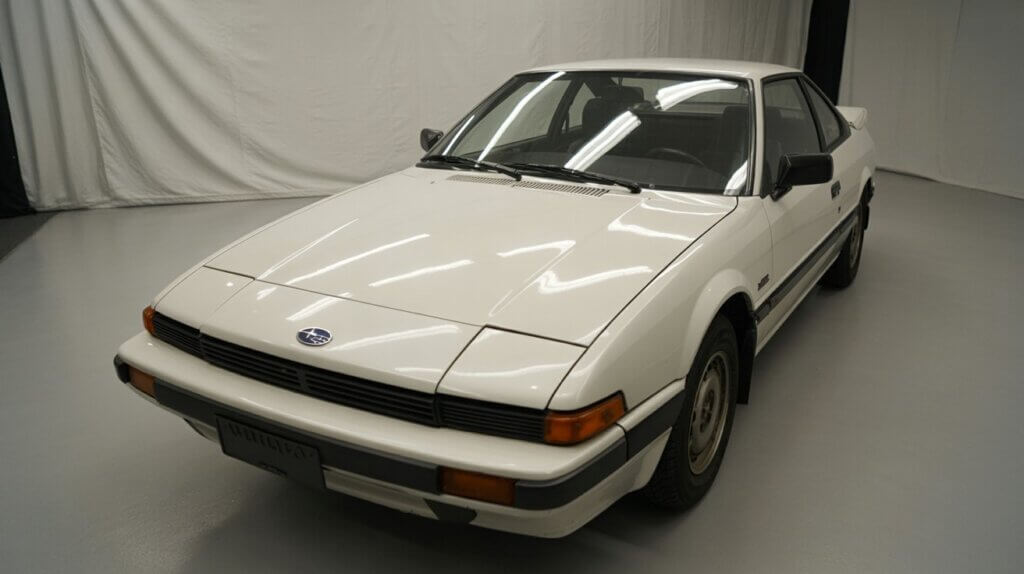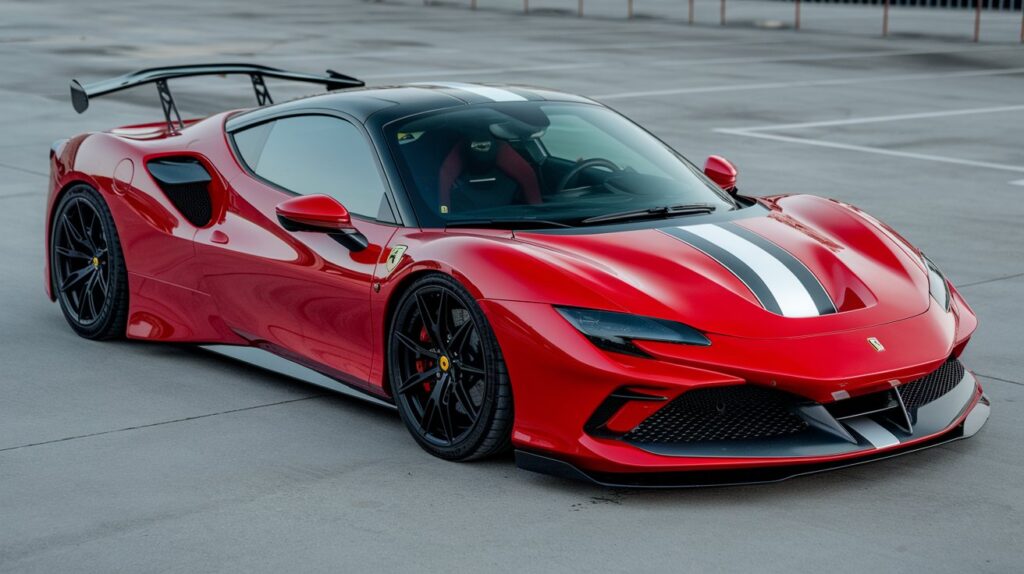Introduction: Subaru’s Sci-Fi Sports Car
The 1980s were a golden era for automotive experimentation. Amid the turbocharged madness and angular bodywork, Subaru introduced something utterly unexpected: the Subaru XT (known as the Alcyone in Japan). Released in 1985, the XT was Subaru’s bold attempt to challenge mainstream sports coupes like the Toyota Celica, Honda Prelude, and even European entries like the Audi Coupe.
But the XT didn’t just play catch-up — it forged its own path with aerospace-inspired design, quirky tech features, and an engineering-first philosophy. While it never dominated the sales charts, the XT has become a cult classic. This article dives deep into the Subaru XT’s history, specs, performance, and why it remains one of the most underrated sport coupes of the 1980s.
Table of Contents
The Origins of the Subaru XT: Bold Design in a Conservative Segment
The XT debuted in 1985, a time when Subaru was better known for practical wagons than for sleek coupes. But the Japanese automaker wanted to break into the sportier end of the market, particularly in the U.S., where two-door coupes were booming.
Design Inspired by Jet Fighters
Subaru’s designers leaned heavily into aerospace aesthetics. The XT’s ultra-low 0.29 drag coefficient was the lowest of any production car at the time. Its wedge shape, pop-up headlights, airplane-style cockpit with a single-spoke steering wheel, and sci-fi digital dash gave it a distinctly futuristic vibe.
The XT’s aerodynamic body wasn’t just for show. It reflected Subaru’s commitment to engineering — a theme that ran through the entire car.

Subaru XT Specs & Powertrains: Innovation Over Power
While the XT looked fast, it wasn’t a powerhouse by modern standards. But its drivetrain tech made it special.
| Specification | Detail |
|---|---|
| Production Years | 1985–1991 |
| Body Style | 2-door coupe |
| Layout | Front-engine, front or AWD |
| Base Engine (XT) | 1.8L EA82 H4 (naturally aspirated) |
| Turbocharged Option (XT Turbo) | 1.8L EA82T H4 turbo |
| Top Trim (XT6) | 2.7L ER27 H6 |
| Transmission Options | 5-speed manual / 3-speed auto |
| Drivetrain Options | FWD or AWD |
| 0–60 mph (XT6 AWD, est.) | ~8.0 seconds |
The XT6: Subaru’s Early H6 Experiment
In 1988, Subaru released the XT6, powered by a 2.7L flat-six engine making around 145 hp. That might not seem impressive today, but the smoothness and torque delivery were ahead of their time — especially in a segment dominated by inline-fours.
The XT6 also introduced Subaru’s Cybrid power steering system, an electro-hydraulic setup that eliminated the need for engine-driven pumps. It was complex, costly, and unique — just like the car itself.
Key Features and Technology
Innovative Suspension and AWD System
The XT featured height-adjustable pneumatic suspension in some trims, allowing drivers to raise or lower the car at the push of a button. Combined with Subaru’s full-time AWD, this made the XT surprisingly capable in poor weather — a rarity for coupes of the time.
Interior: Cockpit Meets Video Game
Inside, the XT was part airplane cockpit, part video game console. Digital gauges, joystick-style HVAC controls, and an instrument panel that tilted with the steering column gave the cabin an immersive, driver-focused feel.
Real-World Driving Impressions
From a modern perspective, the Subaru XT isn’t fast or sharp-handling. But for 1985, it offered a remarkably composed ride and a feeling of high-tech refinement. The XT6’s flat-six gave it more highway confidence than its four-cylinder siblings, though at the cost of added complexity.

Today, enthusiasts love the XT for its quirkiness, but parts can be hard to find, especially for rare features like the Cybrid system or adjustable suspension.
Pros and Cons
Pros:
- Striking, futuristic design still turns heads
- Available AWD and high-tech features were ahead of their time
- XT6’s flat-six engine is smooth and torquey
- Great collector’s item with cult following
Cons:
- Limited horsepower compared to rivals
- Fragile electronics and rare parts can be difficult to replace
- Some overly complex systems (Cybrid steering, air suspension) prone to failure
- Not ideal for performance-focused driving by modern standards
Subaru XT vs. Other 1980s Sport Coupes
Let’s see how the XT stacked up against its contemporaries:
| Feature | Subaru XT | Toyota Celica | Honda Prelude |
|---|---|---|---|
| Design | Jet-inspired, wedge | Sporty but conservative | Smooth, clean lines |
| Engine Options | H4, H6 | I4, I4 turbo | I4 |
| AWD Available | Yes | No | No |
| Digital Dash | Yes (higher trims) | No | Some trims |
| Market Position | Tech-forward coupe | Sporty daily driver | Fun, balanced drive |
While the Celica and Prelude offered more balanced and reliable performance, the XT was boldly different — a conversation starter with real engineering chops.
For more insights on quirky 1980s competitors, check out our article on the Renault Fuego, another coupe that carved its own niche.
Ownership and Collectibility
Today, XT models — especially the XT6 with AWD and manual transmission — are considered collector’s items. They appeal to fans of ‘80s nostalgia, JDM oddities, and those seeking a piece of Subaru’s performance evolution.
Maintenance, however, requires dedication. XT owners often form tight-knit online communities to source parts and share DIY fixes. If you’re looking to buy one, prioritize condition over mileage and verify that unique systems (like the air suspension) are functional — or have been replaced with conventional setups.
Conclusion: Who Is the Subaru XT For?
The Subaru XT isn’t a car for everyone. It lacks modern power, and maintenance can be tricky. But if you’re an enthusiast who appreciates 1980s design, rare engineering, and techy quirks, the XT delivers a driving and ownership experience like no other.
Whether you’re adding it to a vintage collection or simply admiring it as a symbol of Subaru’s experimental spirit, the XT remains one of the most fascinating vehicles of its decade — a coupe truly ahead of its time.
FAQ: Subaru XT Questions Answered
1. Was the Subaru XT sold in the U.S.?
Yes, the Subaru XT was sold in the U.S. from 1985 to 1991. It was available as the XT, XT Turbo, and XT6, depending on the trim and engine.
2. What is the rarest version of the Subaru XT?
The rarest and most sought-after model is the XT6 AWD with a 5-speed manual. These were only sold in limited numbers from 1988 to 1991.
3. Is the Subaru XT fast?
Not by today’s standards. Even the XT6 took around 8 seconds to reach 60 mph. It prioritized tech and design over outright speed.
4. What does XT stand for?
Subaru never officially stated what “XT” stands for, though many assume it loosely means “eXperimental Touring.”
5. How many Subaru XT units were made?
Globally, Subaru produced around 98,000 units of the XT and XT6 combined. U.S. sales represented a major chunk of that total.
6. Can you still get parts for the Subaru XT?
Some parts are available, but rare systems like the Cybrid steering or pneumatic suspension may require sourcing from enthusiast groups or donor cars.
7. Did the XT have a turbo?
Yes, the XT Turbo featured a 1.8L turbocharged flat-four making around 111 hp. It offered a more spirited drive than the base model.
8. Is the XT good for winter driving?
Absolutely. Thanks to Subaru’s available full-time AWD, the XT was among the few coupes of its time that could handle snowy conditions confidently.
9. How does the XT compare to modern Subarus?
While it lacks the speed and safety tech of modern Subarus, the XT laid the groundwork for Subaru’s AWD and engineering-first philosophy, later seen in the Legacy, WRX, and Outback.
10. Is the Subaru XT a good investment?
For enthusiasts, yes. Prices for clean, rust-free examples — especially XT6 AWD manuals — are steadily rising, though ownership comes with quirks and commitment.
Looking to explore more of Subaru’s design history or uncover other forgotten 1980s gems? Check out our deep dive into the underrated Renault Fuego sport coupe for another example of innovation ahead of its time.

